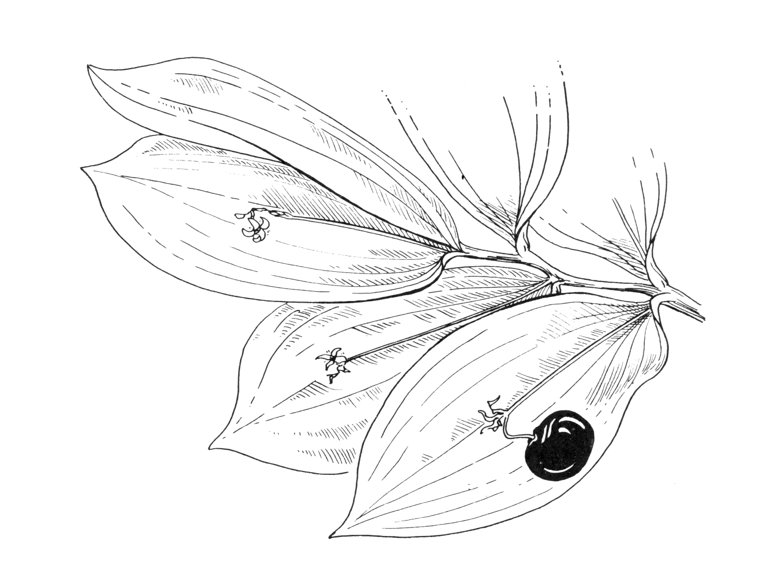An evergreen shrub, 8 to 18 in. high, forming compact tufts, and increasing by new sucker growths from the sides; stem somewhat arching, as thick as a lead pencil, scarcely woody, unbranched, green. Cladodes not spiny, the lower ones narrow-oval, the upper ones oblanceolate, tapered at both ends; glabrous and glossy on both sides, with prominent longitudinal veins, 3 to 41⁄2 in. long, 1 to 11⁄2 in. wide. On the upper side is borne a leaf-like bract, lanceolate, 1 to 11⁄2 in. long, 1⁄4 to 1⁄3 in. wide, in the axil of which a few small, yellowish flowers appear in April and May. Berry red, globose, 1⁄4 to 1⁄2 in. wide.
Native of S. Europe, the Danube region and Asiatic Turkey; cultivated in Britain since the 16th century. No evergreen shrub thrives better than this in shade and in competition with the roots of greedy trees; in this is its chief value in gardens. It flowers in cultivation, but does not fruit unless both sexes are grown, being completely dioecious. Because of its large bracts it was once known as the ‘Bislingua’ or ‘Double Tongue’, one ‘tongue’ being the bract, the other the cladode.
R. colchicus P. F. Yeo – Allied to the above, but with the inflorescence borne on the underside of the cladode and the inflorescence bracts shorter (to 3⁄8 in. long), with fewer veins (three to six). Native of the eastern Black Sea region. It was described in 1966 by Dr Yeo, who also procured plants from Russia for the University Botanic Garden, Cambridge. It had previously been confused with R. hypophyllum, although more closely related to R. hypoglossum.
R. microglossus Bertol. – This is intermediate between R. hypoglossum and R. hypophyllum, resembling the former in foliage and habit, but differing in the much smaller inflorescence bracts, about 1⁄4 to 1⁄2 in. long and 1⁄10 in. wide, with three or four pairs of veins, and in the flowers sometimes being borne on the lower surface of the cladode. It is most probably a hybrid between the two species, distributed by human agency, but possibly a relict species. It has long been cultivated and occurs apparently wild, though never far from habitations, in Italy and bordering parts of France and Yugoslavia. Only female plants are known, which may all belong to a single clone (Yeo, op. cit., pp. 254-6).


